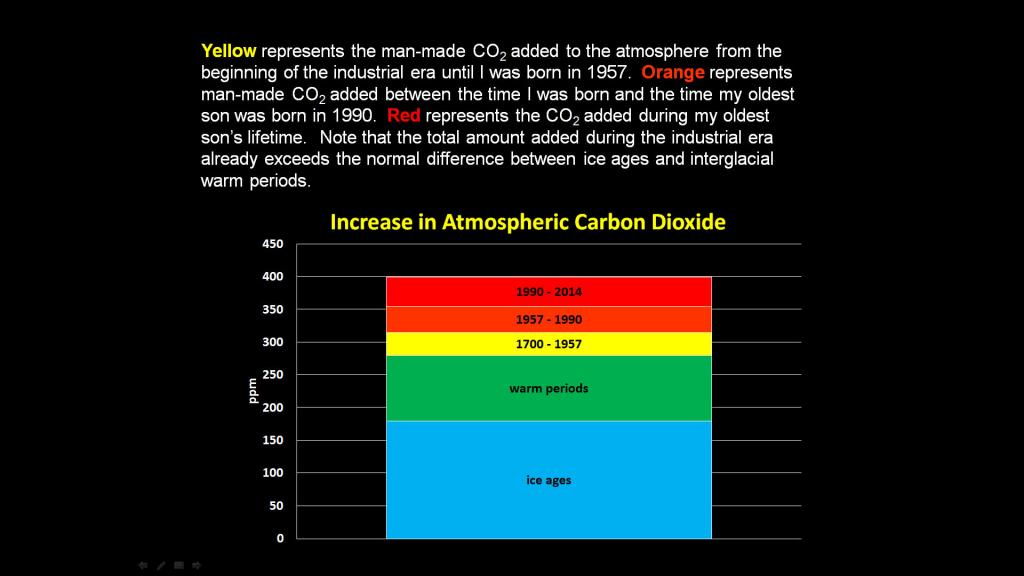Carbon dioxide, like water, is a three-atom molecule with a variety of ways to vibrate. These vibrations are caused by the absorption of electromagnetic radiation (light, etc.) over broad regions (“colors”) of the spectrum. Carbon dioxide is so influential because it absorbs radiation from Earth in the middle of the infrared “colors” that can escape Earth without being absorbed by water vapor. Earth is therefore forced to warm up even more to be able to radiate enough for it to release as much energy as it gets from the Sun. Carbon dioxide is responsible for about 35% of the natural greenhouse effect. [The remaining 5% is largely due to methane, ozone and nitrous oxide.]
The reason additional carbon dioxide causes more absorption of Earth radiation is because the increased carbon dioxide causes absorption of a slightly broader region of the infrared spectrum (‘colors”), and it causes Earth to radiate from a slightly higher altitude (which leads to more surface warming). The amount of radiation absorbed increases approximately with the square root of the amount of carbon dioxide. [Hence, increasing the amount of carbon dioxide by 1% would be expected to cause about a 0.5% increase in the amount of radiation that is absorbed.]
This extra absorption is alarming for three reasons. First, Earth remains in a state of temperature imbalance because we are still receiving more energy than we are radiating. That means the Earth will continue to warm up due to the excess carbon dioxide that is already in the atmosphere. The second reason is that this excess carbon dioxide may take over a hundred thousand years to be removed naturally from the atmosphere. The third reason is that we are still throwing 10 GT of excess carbon dioxide into the atmosphere every year, so that a new warmer equilibrium is getting pushed to higher and higher temperatures.
Current conditions are already melting the Greenland and Antarctic ice sheets, causing sea levels to rise at an accelerating rate sufficient to displace hundreds of millions of people (and their houses, businesses and corresponding infrastructure) within a few decades. Agricultural zones and wildlife niches are shifting poleward and weather is becoming more erratic and more severe.
__



